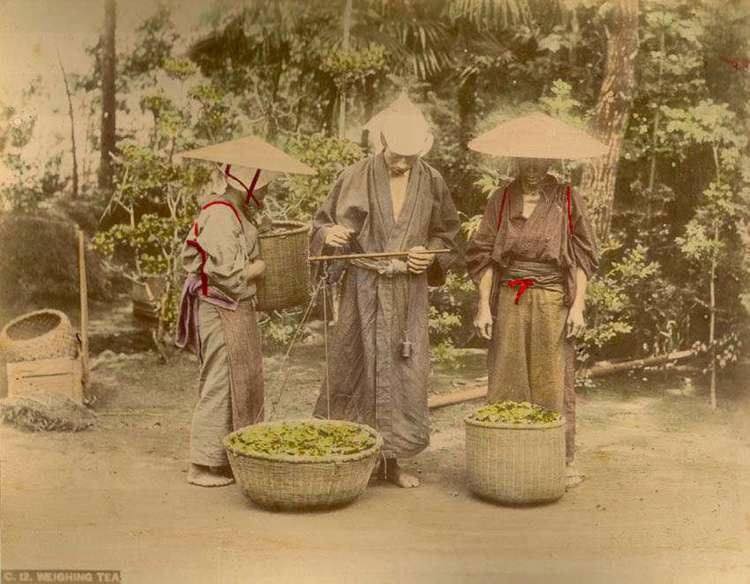
What is the technology for producing Raw Puer?
Share
Producing Raw Pu-erh tea (Sheng Pu-erh) involves a traditional, natural process that emphasizes minimal interference, allowing the tea to ferment and age slowly over time. Unlike ripe pu-erh, raw pu-erh does not undergo the accelerated fermentation process of wet piling. Here is a detailed step-by-step breakdown of the production of raw pu-erh:
1. Harvesting the Tea Leaves:
Tea leaves are typically harvested from large-leaf tea trees in Yunnan Province, China. The best leaves are picked during spring, but other harvests occur in summer and autumn. These leaves are rich in polyphenols and catechins, which are crucial for the tea's aging process.
2. Withering:
Freshly picked leaves are spread out under the sun or in a shaded area to wither, reducing moisture and making them more pliable. This step also allows some initial enzymatic activity, which begins the natural oxidation of the leaves.
3. Kill-Green (Sha Qing):
The leaves are briefly pan-fried, wok-fired, or steamed at high temperatures to halt enzymatic oxidation, preserving the tea’s green color and fresh aroma. This step prevents the tea from becoming fully oxidized like black tea.
Equipment Used: Large iron woks or mechanical frying pans are commonly used, with skilled workers tossing the leaves constantly to ensure even heat application.
4. Rolling (Rounian):
After the kill-green process, the leaves are rolled by hand or with machines to break the cell walls, allowing the juices and essential oils to be released. This step is crucial in shaping the leaves and enhancing the tea’s flavor during aging.
Equipment Used: Traditional rolling is done by hand, but mechanical rollers can also be used in larger productions.
5. Sun Drying:
The rolled leaves are spread out in the sun to dry. This step reduces moisture content further, locking in the flavors developed during previous steps. Sun drying is essential as it contributes to the natural enzymatic activity that will continue as the tea ages.
Equipment Used: Large bamboo mats or woven trays are used to spread out the leaves, ensuring proper air circulation and exposure to sunlight.
6. Sorting and Grading:
The dried leaves are sorted to remove any impurities, stems, or broken pieces. Leaves are graded based on size, shape, and quality. Larger, whole leaves are preferred for higher grades of raw pu-erh.
7. Compression into Cakes (Optional):
- Raw pu-erh can be left as loose leaf or compressed into various shapes such as cakes (bing cha), bricks (zhuan cha), or nests (tuo cha). Compression is believed to enhance aging by allowing the tea to mature evenly over time.
- Steaming: The dried leaves are lightly steamed to soften them, making them pliable for shaping.
- Molding and Pressing: The softened leaves are placed in cloth bags and pressed into molds using hydraulic presses, stone presses, or by hand.
- Drying After Compression: The compressed tea is dried again to stabilize it, ensuring it’s ready for long-term storage.
8. Aging and Storage:
- Raw pu-erh is unique in that it continues to age and ferment naturally over time, developing complex flavors as it matures. Proper storage conditions are crucial to this process:
- Environment: The tea should be stored in a cool, dry, and well-ventilated place, away from strong odors, direct sunlight, and moisture.
- Natural Fermentation: Over time, naturally occurring microbes and enzymes in the leaves work slowly, transforming the tea’s flavor from fresh and astringent to mellow, smooth, and complex with age.
Key Characteristics of Raw Pu-erh Production:
- Minimal Processing: The tea is minimally processed to maintain its natural qualities, allowing for continued fermentation and aging.
- Natural Fermentation: No artificial fermentation steps are involved; the aging process is gradual and can last decades, with the tea's flavor changing significantly over time.
- Artisanal Craftsmanship: Many steps, especially rolling and pressing, are often done by hand, emphasizing traditional skills and craftsmanship.
The production of raw pu-erh tea highlights a blend of ancient techniques and natural processes, resulting in a tea that evolves in taste and value over many years.
